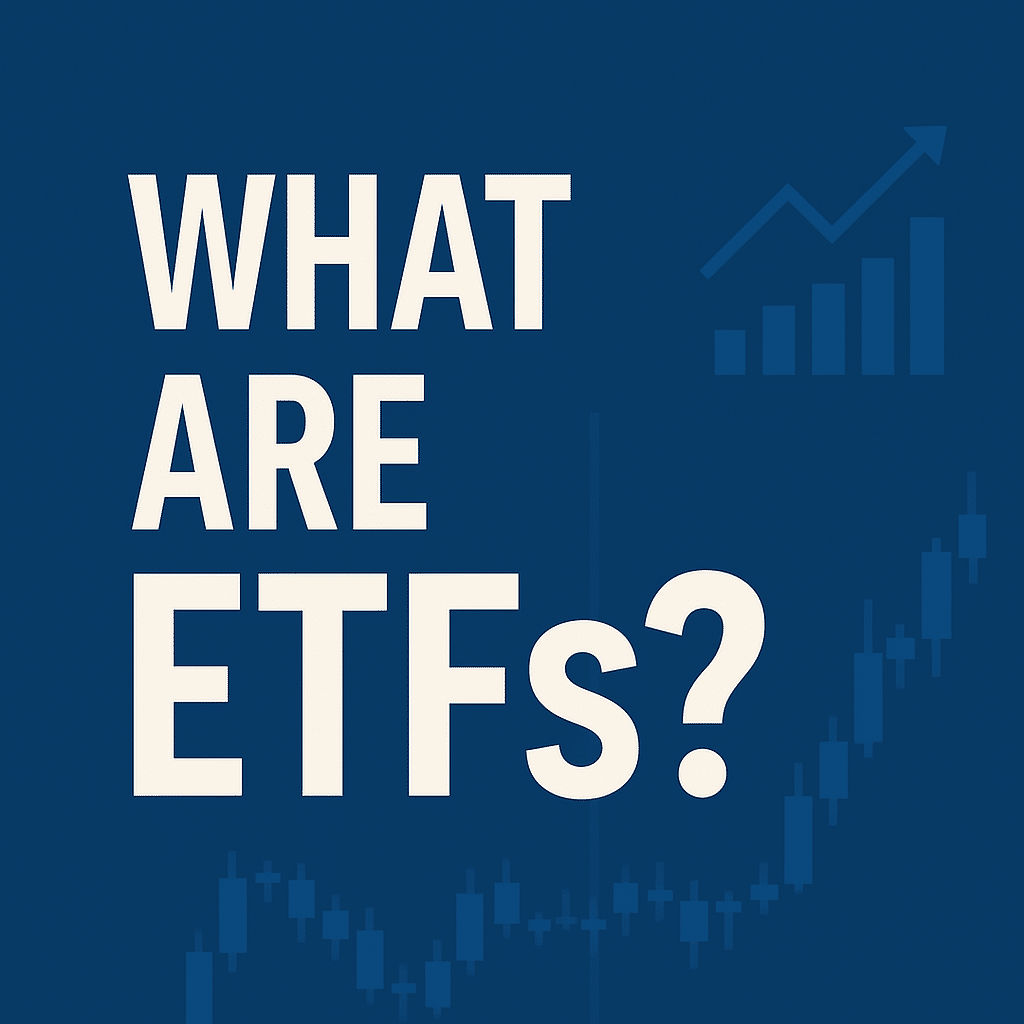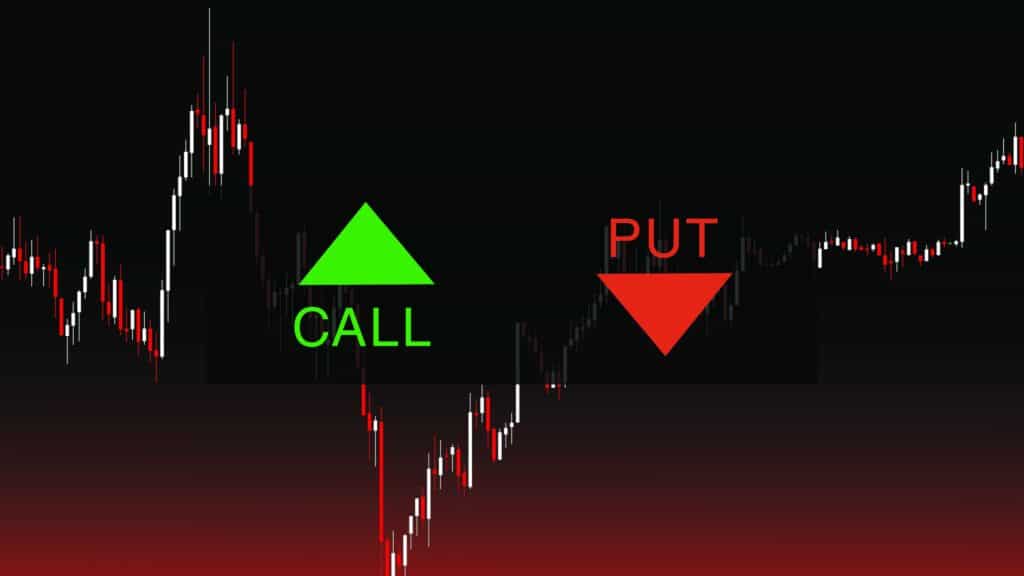What Are ETF’s?
What Are ETFs?
The Complete Guide to Exchange-Traded Funds for Investors

In the world of investing, ETFs—short for Exchange-Traded Funds—have taken center stage. But what are ETFs exactly, and why have they become the go-to investment for beginners and professionals alike?
This guide will break down what ETFs are, how they work, why they’re so popular, and how to use them in your investment strategy.
What Are ETFs? A Simple Definition
An ETF is a type of investment fund that is traded on stock exchanges, just like individual stocks. Each ETF holds a collection of assets—such as stocks, bonds, or commodities—that track a specific index, sector, or theme.
So, what are ETFs doing for investors? They provide instant diversification, lower costs, and flexibility all in one investment vehicle.
How Do ETFs Work?
When you buy a share of an ETF, you’re buying a small slice of a portfolio that contains dozens (or even hundreds) of assets.
Here’s how ETFs work:
-
Structure: ETFs pool investor money and invest in a basket of securities.
-
Shares: You buy and sell ETF shares on an exchange, just like a stock.
-
Price: ETF prices fluctuate throughout the day, based on market supply and demand.
-
Tracking: Most ETFs aim to track an index, like the S&P 500 or Nasdaq-100.
For example, SPY is an ETF that tracks the S&P 500. When you buy SPY, you’re essentially buying exposure to the top 500 companies in the U.S.
Types of ETFs
Understanding what are ETFs also means knowing the different types available. Here are the main categories:
? 1. Stock ETFs
These track a basket of individual stocks—such as a sector (like technology) or a broad index (like the S&P 500).
? 2. Bond ETFs
They invest in government, corporate, or municipal bonds. Great for conservative investors seeking regular income.
? 3. Commodity ETFs
These give exposure to commodities like gold, oil, or agricultural products without needing to physically buy them.
? 4. International ETFs
Want exposure to global markets? These ETFs invest in foreign companies or regions like emerging markets or Europe.
? 5. Sector & Thematic ETFs
These track specific sectors (e.g., healthcare, energy) or themes (e.g., AI, clean energy, ESG).
⚡ 6. Leveraged & Inverse ETFs
These amplify returns (and risk) by using leverage or move opposite to the market. Best for advanced traders.
What Are the Benefits of ETFs?
Why are ETFs so popular? Here are the biggest benefits:
✅ 1. Diversification
Buying one ETF gives you exposure to dozens or even hundreds of assets—instantly reducing risk.
✅ 2. Liquidity
ETFs trade like stocks, meaning you can buy or sell them anytime the market is open.
✅ 3. Low Costs
Most ETFs have low expense ratios, especially compared to mutual funds. No sales loads, and often no commissions.
✅ 4. Tax Efficiency
ETFs use a unique structure called in-kind creation and redemption, which helps reduce capital gains taxes for investors.
✅ 5. Transparency
Most ETFs disclose their holdings daily, so you always know what you own.
ETFs vs. Mutual Funds: What’s the Difference?
A common question when learning what are ETFs is how they compare to mutual funds. Here’s a quick breakdown:
| Feature | ETFs | Mutual Funds |
|---|---|---|
| Trading | Throughout the day (like stocks) | Once per day (end of day NAV) |
| Minimum Investment | Usually 1 share | Often $500–$3,000+ |
| Expenses | Lower (passive management) | Higher (active management) |
| Taxes | More tax-efficient | Less tax-efficient |
| Transparency | Daily holdings disclosed | Holdings updated periodically |
How to Invest in ETFs
If you’re just starting, investing in ETFs is one of the easiest ways to build a smart, diversified portfolio.
? Step-by-Step Guide:
-
Open a brokerage account (e.g., Fidelity, Schwab, Robinhood, Webull)
-
Choose your ETF based on your goals (growth, income, safety)
-
Look at key data like expense ratio, AUM, top holdings
-
Buy the ETF like you would buy any stock
-
Monitor performance and rebalance if necessary
Popular beginner ETFs:
-
SPY – S&P 500 tracker
-
VTI – Total U.S. stock market
-
QQQ – NASDAQ-100
-
VOO – Vanguard S&P 500
-
IVV – iShares Core S&P 500
What Are ETFs Good For? Different Investor Goals
? For Long-Term Investors
ETFs like VTI or VOO are great for retirement accounts and long-term wealth building.
? For Swing or Short-Term Traders
Volatile ETFs or leveraged ETFs (like TQQQ or SOXL) can be used to capitalize on short-term market trends.
? For Income Seekers
Bond ETFs and dividend ETFs (like SCHD or VYM) provide regular income with lower volatility.
Risks to Know When Investing in ETFs
While ETFs are generally lower-risk than individual stocks, they’re not risk-free.
⚠️ Market Risk
ETFs track indexes—if the index falls, so will your ETF.
⚠️ Tracking Error
Sometimes an ETF doesn’t perfectly match the performance of its benchmark due to fees or structure.
⚠️ Liquidity Risk
Some niche or low-volume ETFs can have wider bid/ask spreads or low liquidity.
Final Thoughts: What Are ETFs and Should You Use Them?
ETFs are one of the most versatile and beginner-friendly investment vehicles available today.
They offer:
-
Simplicity
-
Diversification
-
Low fees
-
Flexibility for every investor type
Whether you’re building long-term wealth or looking for tactical short-term trades, ETFs can fit your strategy.
If you’re still asking “what are ETFs,” the answer is simple: they’re the smart investor’s best friend.
✅ FAQ – What Are ETFs?
❓What are ETFs in simple terms?
ETFs are investment funds that trade like stocks but hold a basket of assets, making it easy to invest in an entire sector or market.
❓Are ETFs good for beginners?
Yes. ETFs offer low-cost, diversified exposure to the market, making them perfect for new investors.
❓Do ETFs pay dividends?
Some ETFs, like dividend or bond ETFs, do pay regular income based on the underlying assets.
❓How do I choose the best ETF?
Look at the ETF’s expense ratio, performance, underlying holdings, and whether it matches your investing goal.
❓Are ETFs risky?
All investments carry risk. But ETFs offer built-in diversification, which can help lower risk compared to individual stocks.
Check out articles on:
- Introducing to Options Trading
- Mastering Butterfly Spreads
- The Power of Diagonal Spreads
- The Power of Iron Condors
- The Power of Vertical Credit Spreads
- How to Succeed Trading Stocks, and Stock Options in a Volatile Market
Related Article
Elevate Your Options Trading Skills
Ready to master options? Join our community for in-depth education on options trading, live sessions, and expert analysis of options trading strategies. Sign up today to start profiting from market swings using advanced options trading strategies!
Below are the links:
- Day Trading Room
- Swing Trading Room(Short-term)
- Small Account Mentorship
- SPX Trading Alerts(Alerts Only)
- Revolution Swings(Alerts Only)
To your success,

Billy Ribeiro is a globally recognized trader renowned for his mastery of price action analysis and innovative trading strategies. He was personally mentored by Mark McGoldrick, famously known as “Goldfinger,” Goldman Sach’s most successful investor in history. McGoldrick described Billy Ribeiro as “The Future of Trading,” a testament to his extraordinary talent. Billy Ribeiro solidified his reputation by accurately calling the Covid crash bottom, the 2022 market top, and the reversal that followed, all with remarkable precision. His groundbreaking system, “The Move Prior to The Move,” enables him to anticipate market trends with unmatched accuracy, establishing him as a true pioneer in the trading world.
Connect with us:






